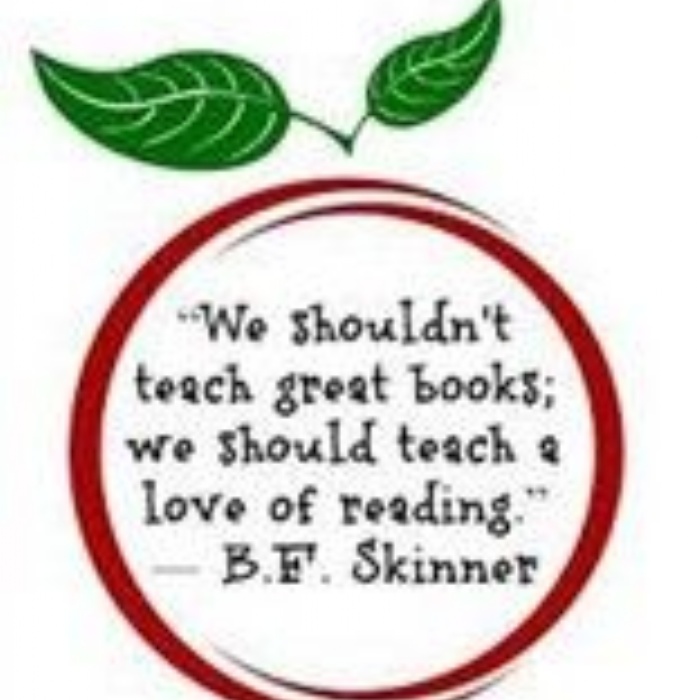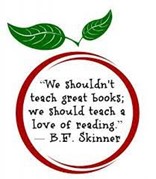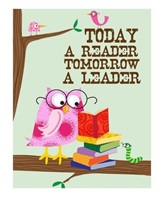
When thinking about my love of books, I am compelled to draw upon a comparison to magnets. Magnets, I hear you say? Let me explain…
I would say my hands (led by my heart and head) are the North pole and books are the South pole. Whenever I am around books, I am instantly pulled in their direction! Whether it’s walking into a library, a bookshop, going to a car boot (to name, but a few), I will immediately be pulled to books. I have even been known to completely ignore my friends when I am in the presence of a well-organised bookshelf.
I often ponder on where my love of literature comes from. Was it a family member? Was it a teacher? Was it my own ‘love to learn’ nature? And I would have to say it’s all of them. There was my grandmother, who was a librarian, who we would often visit at the local library: I was always proud to be borrowing a book from a woman who I admired so much. Then there was my dad, who always encouraged us to read. He would often buy big hardback books about History and Art, whilst carefully monitoring the books we read that were past to him from family members: This is a habit that is now instilled in me and I am forever protecting a book spine. I was also lucky to have teachers around me that loved to tell stories or share them too! Mr Holmes was one of those teachers. He would never let us leave the school gate without telling us a story with his story teller voice. He was never afraid to put on a funny accent or lower his voice to create suspense. He would lure you in with his hypnotic narrative and then…BOOM! His voice went up an octave and we would all jump. He was, what we all need to be, A READING TEACHER!
So what is a reading teacher?
A reading teacher is someone who is a reading role model. They are someone who inspires and encourages children to become avid and engaged readers. Reading teachers read, reflect, know literature and share their passion through being in the library, reading aloud, be seen with literature and can talk the language with children. Mr Holmes was one of many teachers/influencers who allowed me to be a reading pupil and develop into a person with a love of reading, and someone who reads for pleasure.

Reading for pleasure is defined by the National Literacy Trust as, “reading that we do of our own free will, anticipating the satisfaction that we will get from the act of reading. It also refers to reading that having begun at someone else’s request we continue because we are interested in it.” (Clark and Rumbold, National Literacy Trust, 2006).
And although reading for pleasure has not been a research priority previously, there are more and more studies that are now highlighting that reading for pleasure has a huge impact on children and their futures. Research shows that children who read for pleasure experience high levels of well-being, engage in learning and are successful in life. Studies have shown that reading for pleasure is the biggest single indicator of a child’s future success, and the earlier we unlock the doors for children, the better as it is. Reading for pleasure is linked to children’s:
- Reading achievement and writing ability;
- Text comprehension and grammar;
- Breath of vocabulary;
- Positive reading attitudes;
- Greater selfconfidence as a reader;
- Enjoyment of reading in later life;
- Understanding of different faiths and cultures;
- Participation in their communities; and
- Greater insight into human nature and decisionmaking.
So, what can we be doing more of within our schools to promote reading for pleasure? I think the first thing to note is, it doesn’t always have to be children holding a book of fiction. Anything from poetry to instruction manuals, magazines, comics, biography, fiction, history, maps and information is classed as reading. You can do it anytime, anywhere.
To promote reading for pleasure, every schools needs to have an interested ‘expert’ on the school staff: Culture is key! Every school needs someone who is passionate about reading, who loves children’s literature and is up to date with current trends as well as awareness of the classics. That person will be the pebble in the pond, who will start the rippling effect in changing the culture of the school’s approach to reading.
An important factor in developing reading for pleasure is allowing children to have a personal choice in what they read. I am not talking about scraping phonetically-matched books – they need those – but this is about every child having a book that they have chosen to read themselves or with/to a family member. When Gambrilli, 1996, questioned children about what they had enjoyed reading most, 80% of them said it was a book that they had chosen. Over recent years, this percentage has gradually increased to 86%.
Within our school, we need to make spaces, places and time for reading. Do you have a dedicated time in the school day where children read for pleasure? If not, then get this in! Does your school environment have places where the children can read for pleasure? This could be inside and/or outside. Does your school classrooms have spaces where children can choose reading for pleasure books? It is important that children have access to mini libraries and/or a school library where they can choose a high-quality, forward-facing books and take them home and/or read in the school day.
It is vital that all children have access to an excellent book provision which mirrors them. All children need and deserve to see themselves and people that look like them represented in the books that they read. It makes them feel valued, connected, and inspired. When auditing your current reading provision, it is important that it mirrors your school’s context and cohort.
Does your timetable allow for ‘book-talk’ sessions at any time? Is reading woven into the curriculum to allow for this? By giving time to discuss books and texts, children are able to develop their understanding, vocabulary and learn from other positive reading models. This could be historical sources, instruction manuals, recipes, explanation texts and fictional texts too.
How often are we as schools maximising those opportunities to engage with our families? Do we share information with our families about literature and the reading opportunities that children are exposed to? Are we supporting families with how to be good reading role models? Evidence suggests that home environments are essential to the early teaching of reading and fostering that love of reading. The Open University, Reading for Pleasure site has some amazing ideas to support with this.
Finally, do we have designated time within the school day so that children can listen to books aloud? If I think back to when I started typing this blog, I mentioned Mr Holmes who thirty years on still sticks in my long term memory as someone who influenced my passion for reading. He didn’t shove reading down my throat: He read aloud to me every day. He immersed my environment with books. He talked to us about books and texts and he really listened to us when discussing literature. He promoted reading every day. He was an inspirational reading teacher!
Just think, if we adopt the suggestions above, and embed reading for pleasure within our schools/practice, then we are paving the way for a million+ doors to open for our children. We are influencing their futures and allowing them to be successful in later life. Like Margaret Fuller once said, “A reader today. A leader tomorrow.” Who knows what potential leaders sit amongst us within our classroom?

Nicole Andrews


